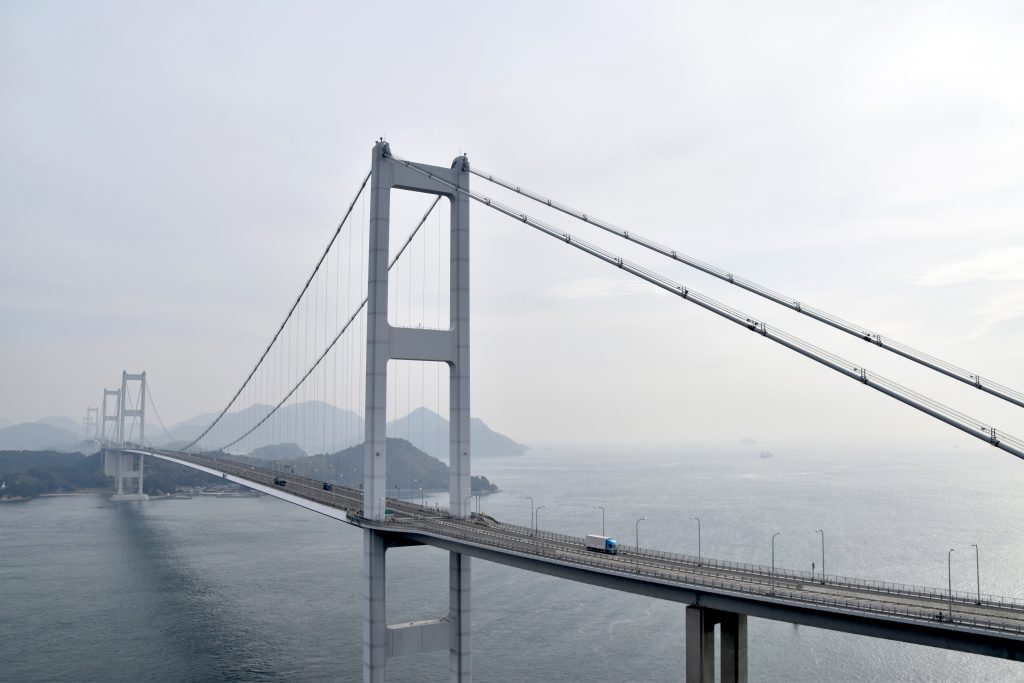
- The Shimanami Kaido begins on Honshu in Onomichi City.
- across the six islands of Mukaishima Ikuchijima, Omishima, Hakatajima
- and Oshimbegins on Honshu in Onomich on Honshu in Onomichi City
Depending on your direction of travel, Imabari is either the beginning or the end of a journey across the Shimanami Kaido. The start and finish of the route at the Shikoku end of the the world’s largest suspension bridge which stretches across the Kurushima Kaikyo Straits is actually about 5km from the center of Imabari’s urban center. You can decide to stay in the center of Imabari, or you can base yourself on the edge of the straits at the Itoyama Sunrise cycle center which offers very reasonably priced accommodation and bicycle rental.
You hear so much about the bridges of the Shimanami Kaido - how long they are, how high they are, when building was began and when they were completed - that it’s possible to get somewhat “bridged out”. The Kurushima Kaikyo Bridge, however, really is something to behold.
The first glimpse of the bridge after you crest the final climb on the Ohshima section of the Shimanami Kaido is quite breathtaking and it is impossible not to marvel at what a feat of engineering the 4km bridge is. It is also very pretty. When the weather is fine you can gaze out at the bridge and watch the array of vessels, from small fishing boats to very, very large container ships and tankers, that go back and forth below it for hours. On very clear days, from the bridge you can see the mountains of Ishizuchi range towering above Imabari. Even when the weather isn’t great, the bridge takes on a completely different, but no less impressive character, in the mist. Even if you are not taking on the whole of the Shimanami Kaido, or are only in Imabari for a day or two, it’s well worth spending some at time at the bridge, either on a rental bicycle or on foot.
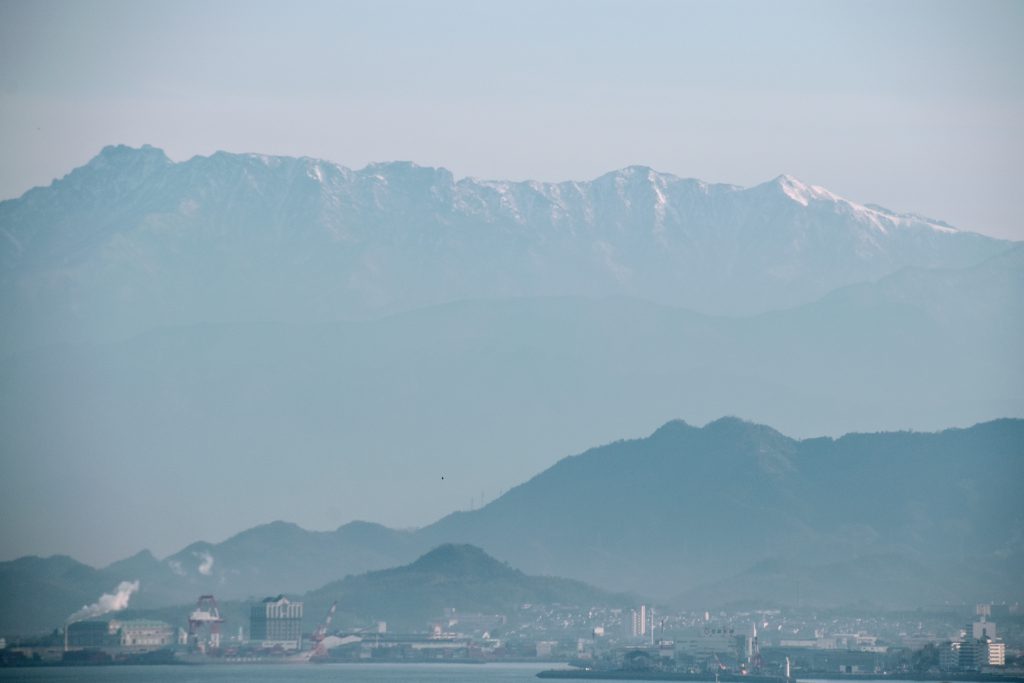
Another way approach the bridge is from below. Try a mini island-hop on one of the little ferries that leave from Hashihama Port and calls at the islands of Kurushima, Oshima and Umashima. Kurushima was the site of one of several Suigun maritime clan forts in the straits.
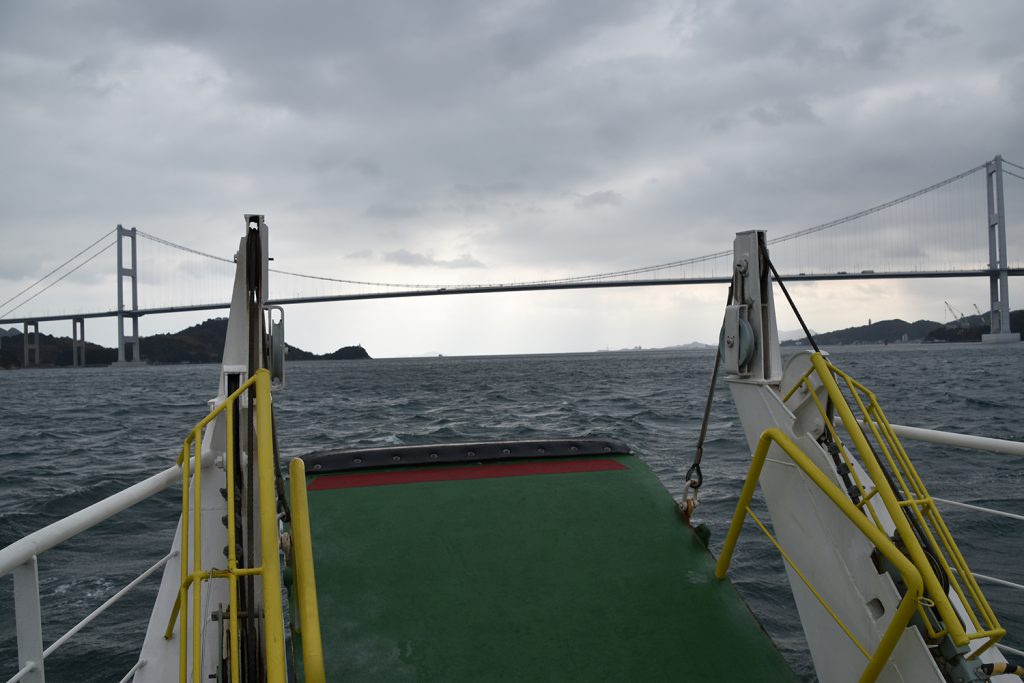
Oshima, on the other hand was turned into a fortress at the turn of the 20th century when the Japanese navy was concerned about Russian encroachment into the Kurushima Straits. Small by name and small by nature, many military remains are accessible along a pleasant nature trail and the island offers great views of the Kurushima Bridge. Umashima is one of the islands on which the one suspension bridge’s towers stands. An elevator takes you up to the bridge from where you can walk back across. Bikes can be taken on the ferry and can go up and down in the Umashima elevator, so visitors have many options in planning a Kurushima excursion.
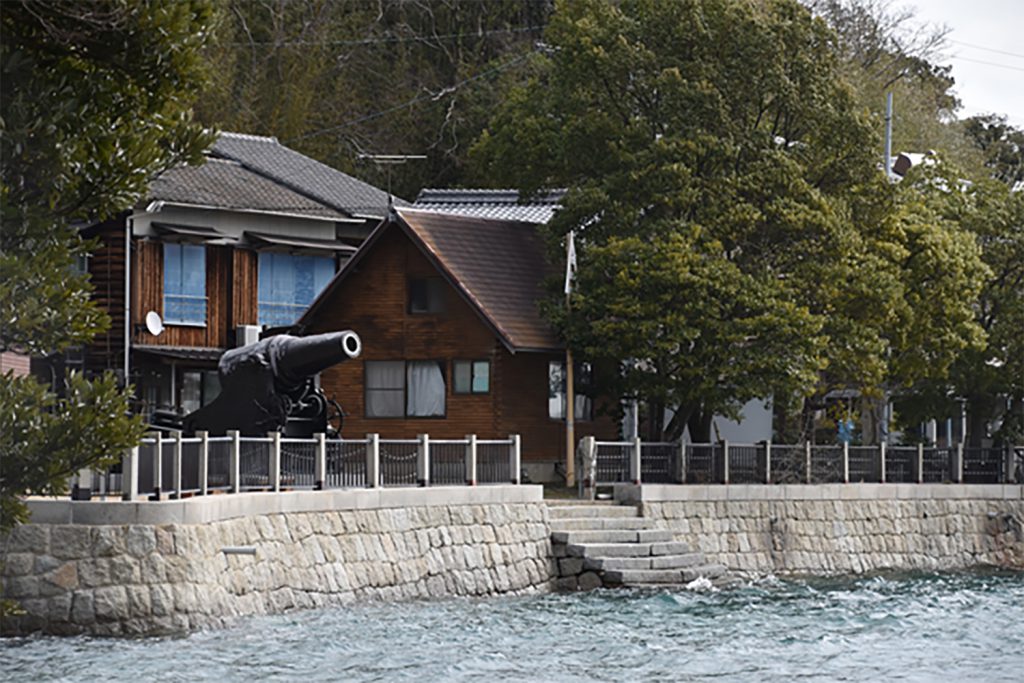
A huge propeller on display in front of Imabari’s City Hall testifies to the central role that shipbuilding has long played in the city’s history. Although the industry is still much in evidence, the golden years are now past and it feels that time is passing Imabari by. The silver-lining is that this makes it a great place for those that enjoy strolling long shopping arcades lined with Showa-era shops and quite Instagrammable retro signage.
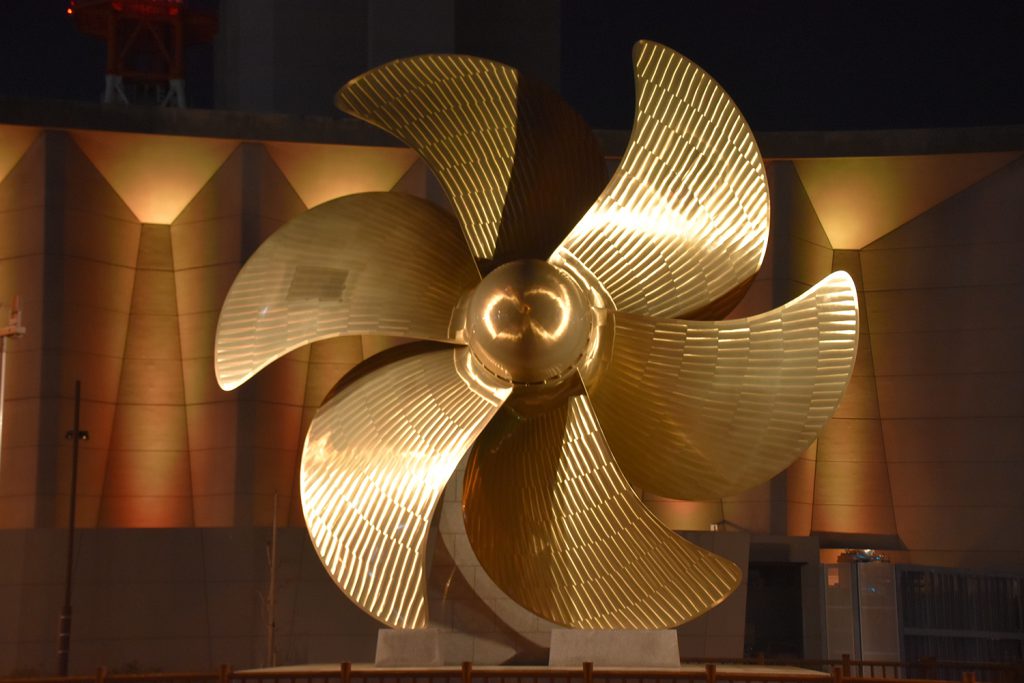
Imabari is also home to one of Japan’s ”three great water castles” with the moat filled from the sea. The castle buildings themselves are a recent reconstruction, but it is a very pleasant place to spend some time and looks particularly nice illuminated after dark.
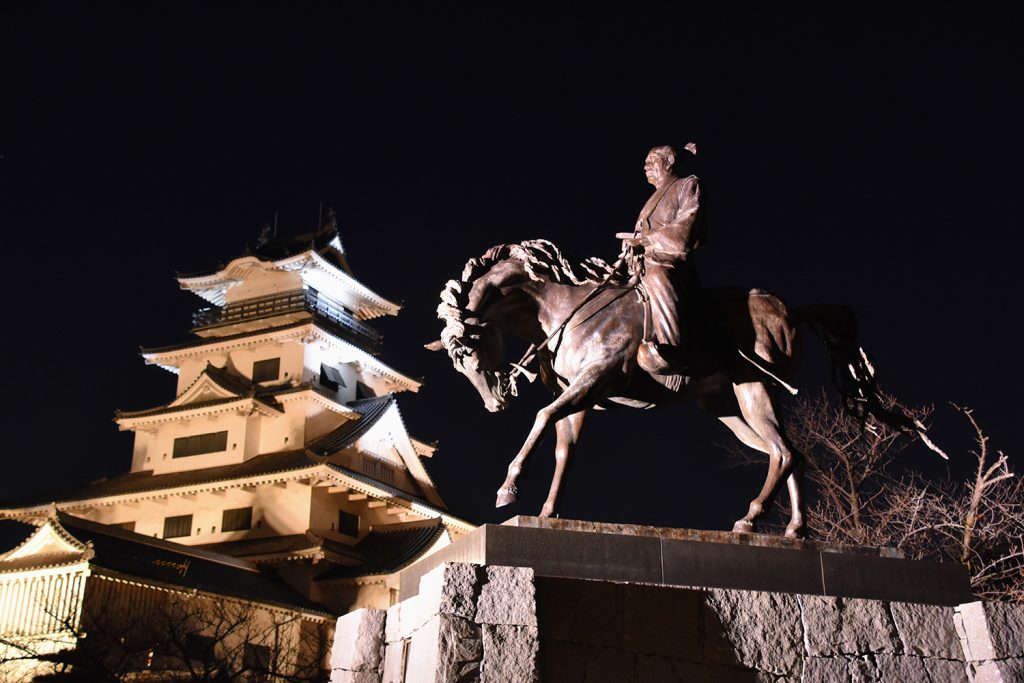
Sunrise Itoyama [サンライズ糸山]
On the Ehime side of the Kurushima Bridge, Sunrise Itoyama is bicycle rental point and hotel. It has one of the best views of the suspension bridge and the Kurushima Channel. Views can be had from the stylish ‘Kaze no restaurant’ (which offers a good western breakfast) and free of charge from the large public lounge. The information counter staff are also very helpful capable in English.
Sunrise Itoyama
URL:http://www.sunrise-itoyama.jp/archives/english/
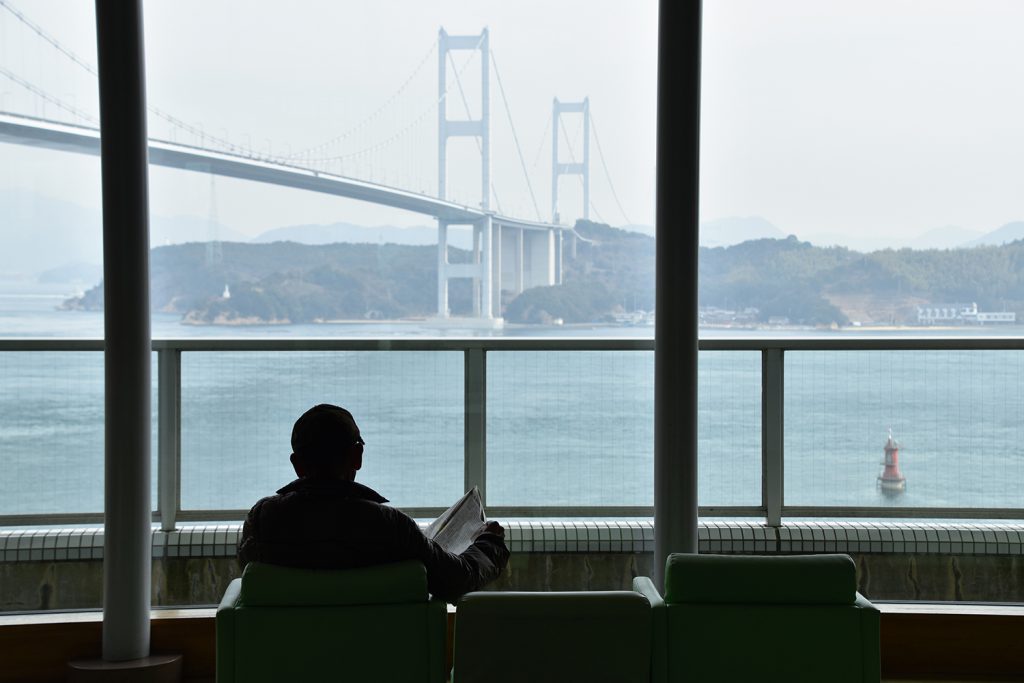
Kurushima-Kaikyo Bridge[来島海峡大橋]
The Kurushima-Kaikyo Bridge is a worthy destination in itself. Why not join the many locals use the bridge as their daily exercise route (so cyclists should take care on the circular approaches at the either end), either by bicycle or on foot. Rent a bike in Imabari or at Sunrise Itoyama and go take in the views and marvel at the scale of the world's longest suspension bridge.
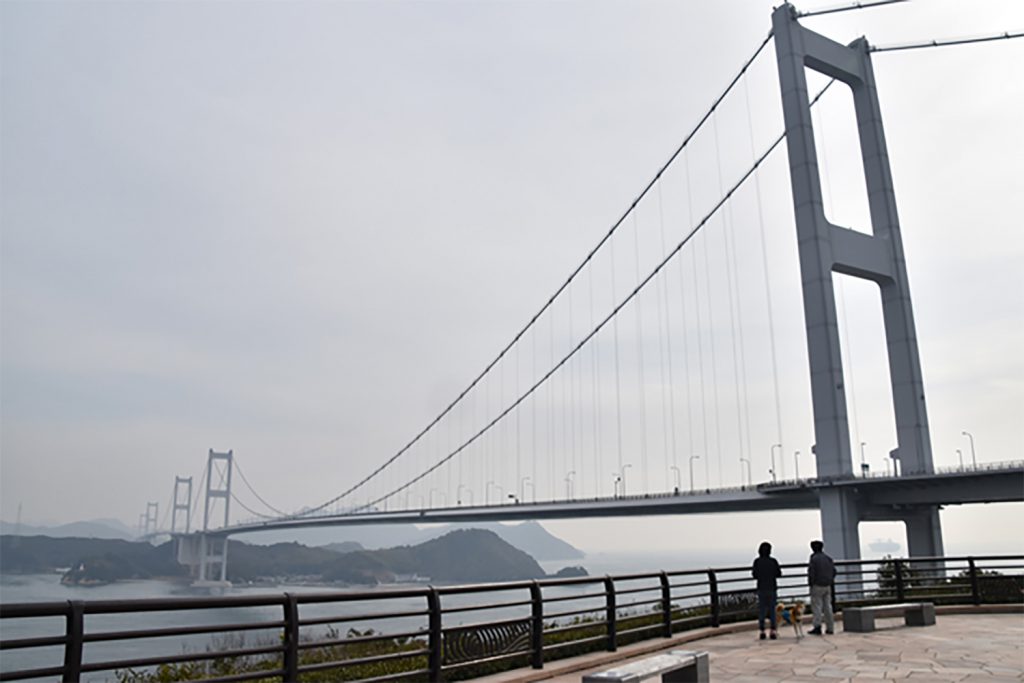
Kurushima Straits Island Hopping[来島海峡島巡り]
Small passenger boats leave from Hashihama Port for 3 tiny islands in the Kurushima Straits several times a day. The boat stops first at Kurushima, a former Suigun fort site, then Oshima which is covered with 19th century military remains and ends up at Umashima from where you can return by boat or take the elevator up to the Kurushima-Kaikyo Bridge.
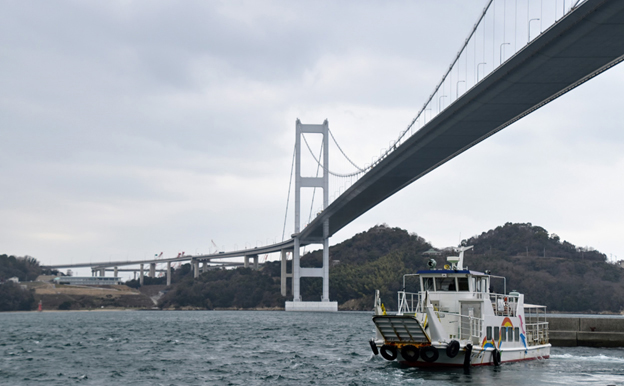
Yakibuta Tamago Meshi[焼豚玉子飯]
A bowl of rice with strips of grilled pork, topped with two fried eggs and sweet-and-sour sauce. If this sounds like your kind of thing, you have to try Imabari’s soul food. Found in eateries all around the area, it’s served fast and is meant to be gobbled down with a spoon. Make sure the egg yolk and sauce covers all the pork and rice.
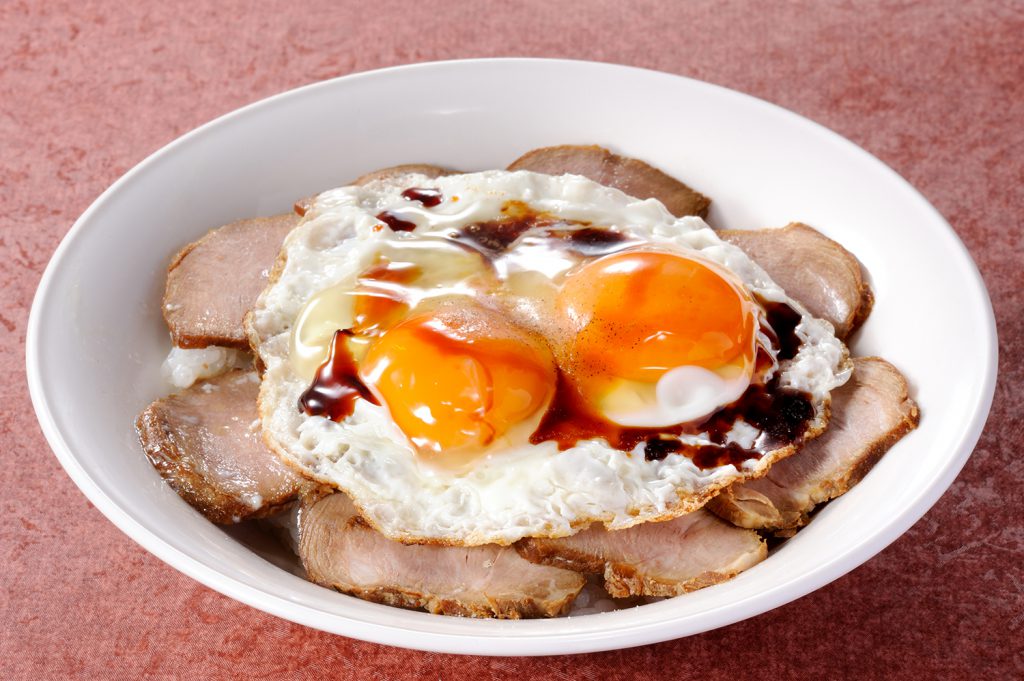
Shikoku 88 Temple Pilgrimage[四国88カ所霊場巡り]
Whether you walk, cycle or take a bus tour, the full 88 temple pilgrimage is a major undertaking that can take weeks. You can, however, get a taste of what the pilgrimage experience might be like by spending a day visiting the temple numbers 54 to 59, which are located in Imabari. six temples in Imabari from 54 to 59: Enmeiji, Nankobo, Taisanji, Eifukuji, Senyuji, and Kokubunji.
Shikoku 88 Temple Pilgrimage
URL:http://wwwtb.mlit.go.jp/shikoku/88navi/en/
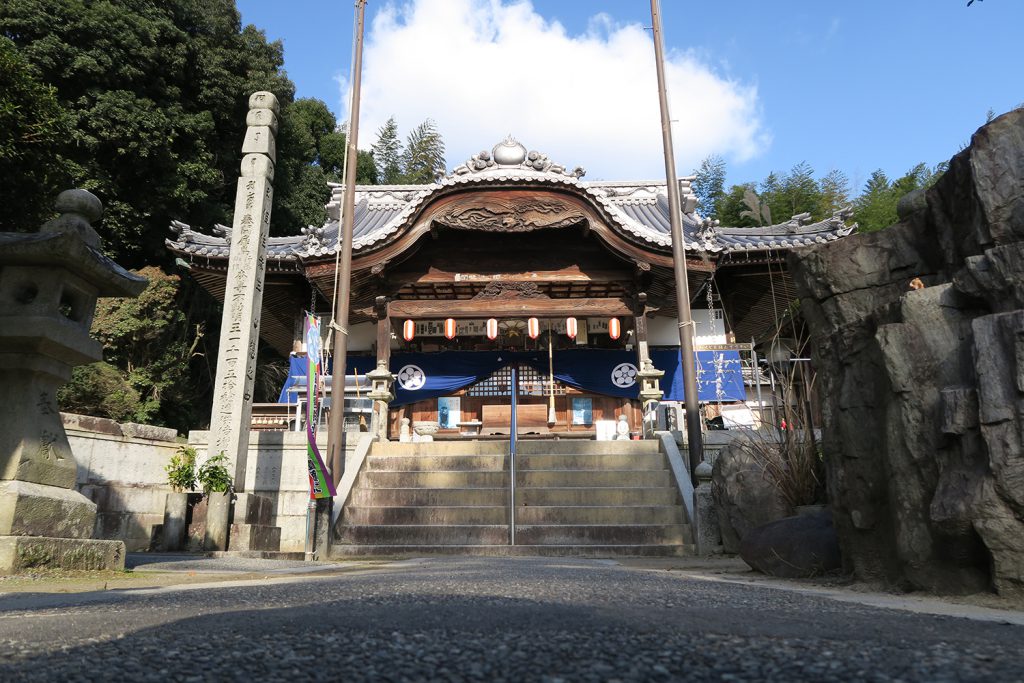
- The Shimanami Kaido begins on Honshu in Onomichi City.
- across the six islands of Mukaishima Ikuchijima, Omishima, Hakatajima
- and Oshimbegins on Honshu in Onomich on Honshu in Onomichi City


